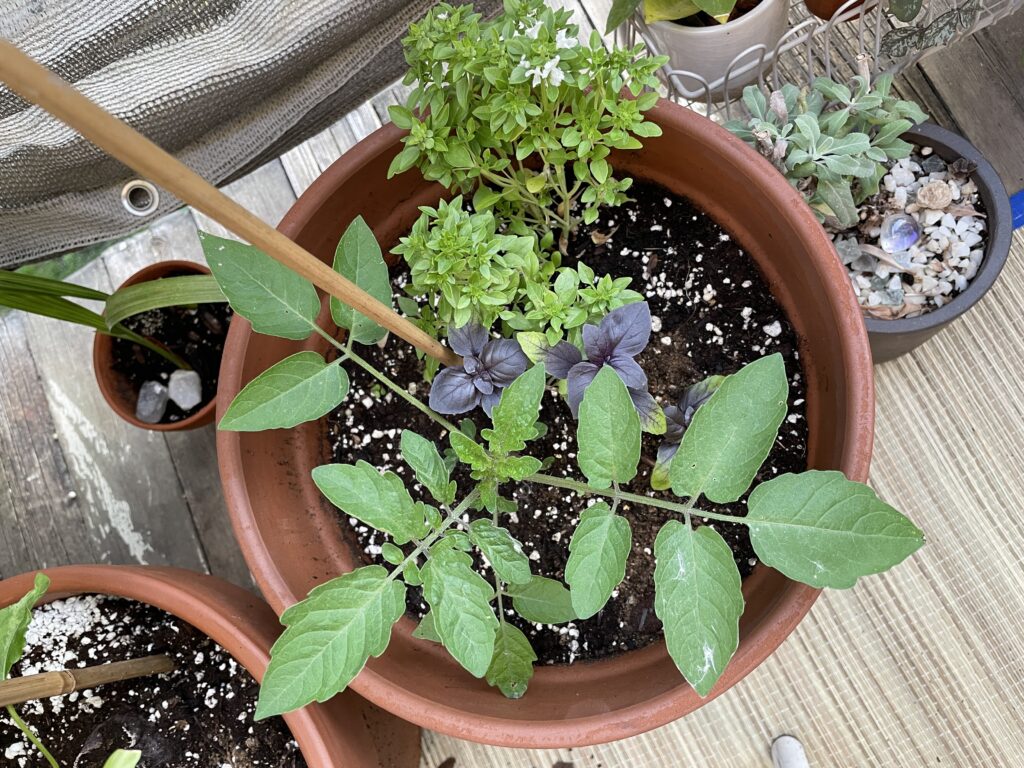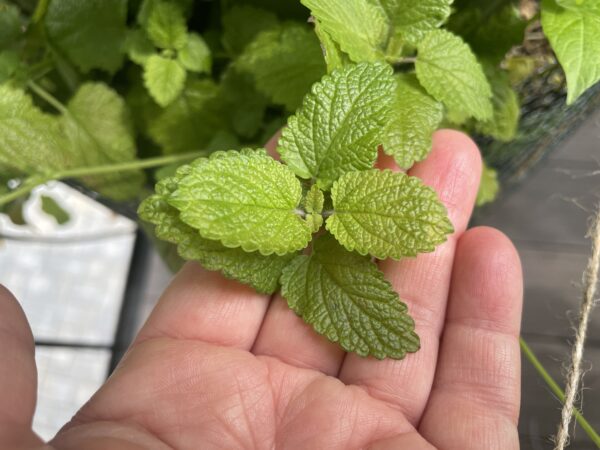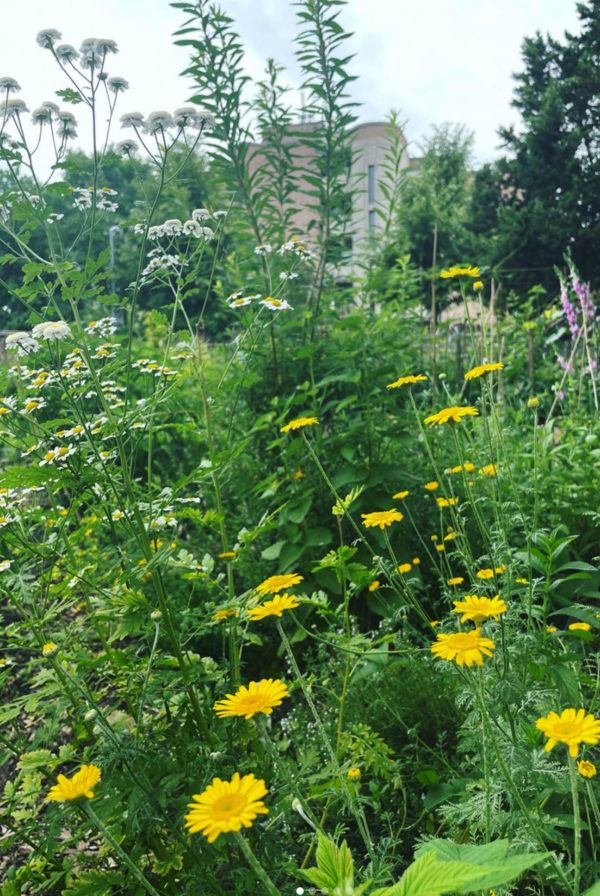You can grow more than you think in containers!
It’s time for me to start planning my summer garden again. In fact, I’ve already bought new seeds and looked through the leftover seeds from other years and I already have a loose plan of what I want to grow!
My garden is unique in that I almost only have space for containers. I grow plants up on a balcony, as well as on some limited space on the ground (set on paving stones or grass).
I’ve been container gardening for well over ten years now, and I have to admit that a lot of my current success with it has been based on trial and error. Discovering the plants that can thrive in containers, finding out the best containers and growing conditions for them, and getting used to the different needs (like watering schedules) of plants growing in containers.
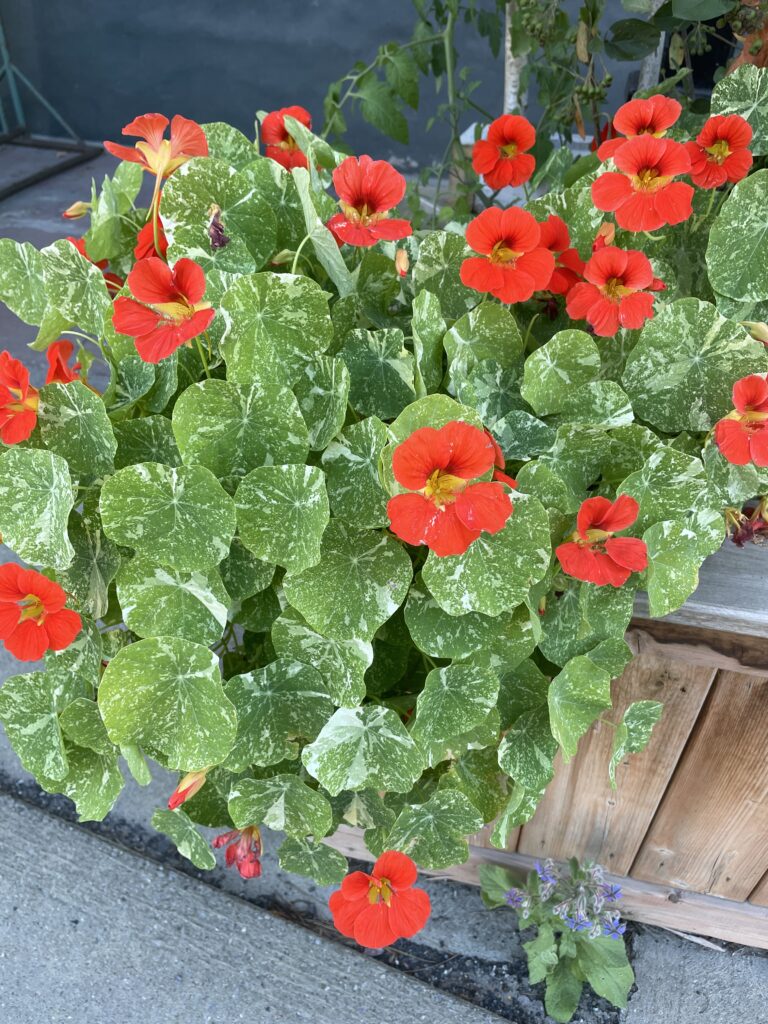
Growing conditions
Before I list out what plants are essential for me to grow in a small container garden, a few notes. I am located in zone 5, which really doesn’t say much other than we can get down to -40 degrees (celsius and Fahrenheit) in winter, though a low of -20 celsius or -5 Fahrenheit is usually the coldest we get. This basically means that very few if any plants can overwinter in containers, so I do need to start them over again each year.
Our summers can start very quickly; it’s common for us to have snow or ice in late April or early May followed by an intense heat wave in mid- or late-May. Our summers are usually short and intense, hot and humid from June through early August, cooling down to pleasant warm temperatures in late August before dropping down to late summer/early fall cool conditions in September. October is sometimes mild, sometimes cool, so I never know what will survive into that month and generally do not plant a fall garden because we can have frost at any time in October and our daylight by October is so short, nothing grows very well (even typical fall crops like radishes or cabbage, with the exception of kale).
With that said, we have also experienced cooler summers, rainy summers, dry summers, summers with both intense rain followed by drought and vice versa, and so on. So I usually plant plants that, summer after summer, have proven themselves to withstand a variety of conditions and whatever our unpredictable weather can throw at them.
Flexibility with containers
One thing I like about container gardening is its inherent flexibility: if a plant is not doing well in one place, you can try moving the container elsewhere and seeing how it does. This helps me adjust how much light it gets, or to move plants to/from small microclimates around my house (meaning, sometimes a certain side or area of your house or yard might be warmer or cooler based on conditions in that specific spot).
Where you live - and I mean this very specifically, the exact location of your house, not necessarily your zone or geographic location - will dictate what plants do best in containers throughout the summer. But the following are the plants that I not only have found do really well in containers for me in the conditions I have in summer, but I love! I have noted not just the names of the plants, but where I plant them, what kind of planter I typically plant them in, when and under what conditions they thrive and how I use them throughout the summer.
The best plants to grow in containers (in my experience!)
- Roses - Not many people think of planting roses in containers, but this is my favourite way to grow roses! The trick is to pick types of roses that are going to stay small and shrubby, and will tolerate a wide variety of conditions. This is where some research will come into play, as most roses will grow large or are climbing roses that are too tall/big/unwieldy for containers. Here in Canada, there is a variety of roses available that is called “Morden,” developed in Manitoba, which I find work really well in containers. Their mature height is around 3 feet and they specifically do well in containers. They even survive the winter in containers for me in a protected spot (they are supposedly hardy down to zone 2A, or -50 Fahrenheit), though I will note they grow better in their second year if transplanted to the ground after you enjoy them in a container. You can also look for miniature roses and other varieties of roses that are specifically earmarked as suitable for containers. I grow my roses in a large terracotta pot (usually 14 inches wide or bigger) and in the beginning of the year use a high quality potting mix, adding 1 tsp of Epsom salts to the soil. I mulch the pots with a pine bark on top after planting, and regularly fertilize with a rose fertilizer throughout the year (though I err on the side of under-fertilizing, rather than over-fertilizing, as salts and nutrients can build up in a container and roses aren't always a fan of being heavily fertilized).
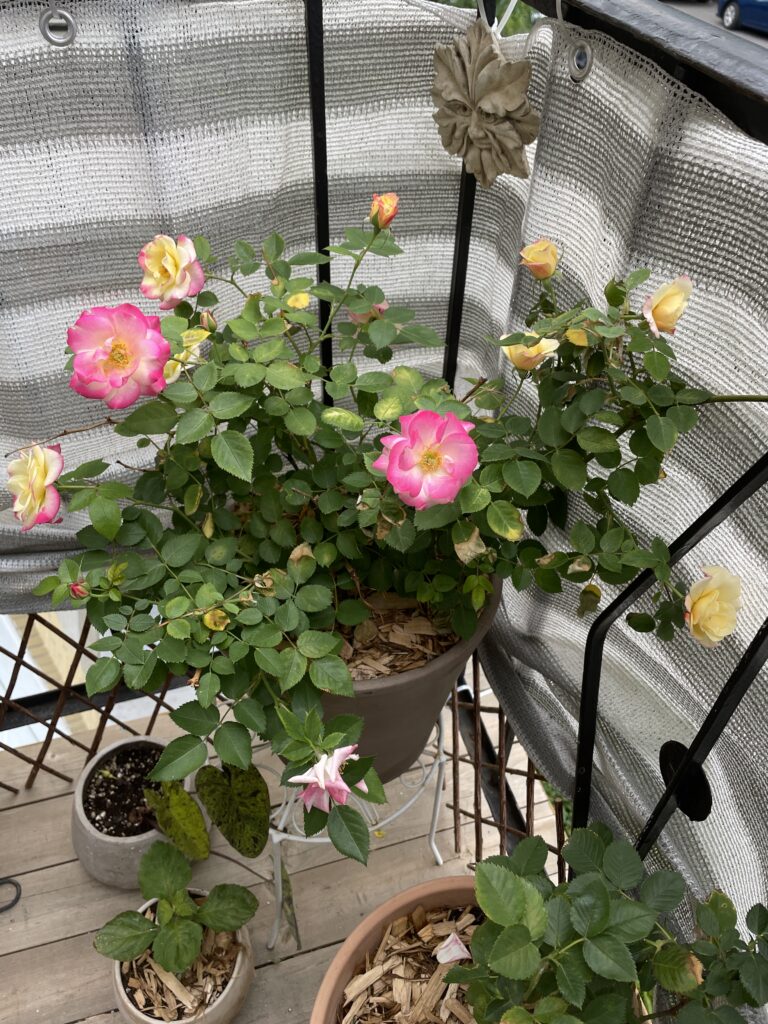
- Rosemary, oregano and thyme - I started out with some trickier plants to grow in a container garden (lavender and roses), but herbs are by far the easiest types of plants for me to grow in containers! I noted rosemary, oregano, and thyme here, but almost any herb that you can think of is well-suited to containers. I also find they are not picky in terms of what kind of container they grow in, and do well in raised beds mixed with other plants. I prefer to grow my herbs in a Greenstalk garden container (I am not affiliated with this company, I just find their products are some of the best containers to grow stuff in!). Because of our short season, I do not start these herbs from seed, as they will take at least a full summer (if not longer) to mature enough to harvest. I also need to treat these herbs as annuals since I find they do not survive the winter in containers, except for the occasional winter when my thyme survives (thyme and oregano will come back for me if planted in the ground, though rosemary will not where I live). I buy small plants from garden centres or local farmers at the start of the summer and let them grow out all summer long. Rosemary, oregano and thyme are all vigorous and easy to grow in a container and I harvest from them all summer long for cooking, flower bouquets, and to dry for use in the winter. Other herbs that can be grown easily in containers are parsley, cilantro (though it bolts quickly), dill, and chamomile.
- Lavender - Lavender is gorgeous when grown in the ground, and will sometimes overwinter for me in very protected, microclimate spots in the ground near my house. However, it can struggle through a zone 5 winter which is why I often plant it in containers and treat it like an annual where I live in order to be sure I can enjoy the blooms every year. I love lavender because it is strongly scented, attracts pollinators, and thrives during the intense, hot part of our summer in June and July when other plants struggle. I have planted it in big planters as well as smaller terracotta pots and it does well, though in the terracotta pots it will need more water than you might think to thrive (usually lavender in the ground thrives in well-drained, drier conditions, but in pots, it will want to be watered more regularly). If you are treating lavender like an annual, it is important to plant a variety that will bloom in its first year. Varieties that flower in their first year are Angustifolia types, which are commonly known as Hidcote and Munstead types. You can also check the tag of a lavender plant to see if it will bloom in its first year, as many varieties have been developed that do. Spanish lavender also blooms in its first year, but I don’t always plant it because I don’t find it to have as nice of a fragrance or bloom. Be sure to choose a relatively large plant (versus a smaller plug of lavender that will need to grow out for a few years before blooming). I never start lavender from seed; not only is it slow and difficult to germinate, but when you start it from seed, you will need to let it grow out for a few years before it will bloom, regardless of its type. With our harsh winters, this isn’t possible for me to do. Usually greenhouses and garden centres will stock larger lavender plants, but also be wary of any plants that have been forced to bloom too early. The Angustifolia types of lavender should bloom in late June, early July (at least in my area) and has a big first flush of blooms often followed by a smaller second flush of blooms later in the summer, around August or September. If you do have some space in the ground, you can plant your lavender in the ground at the end of the growing season and see if it will come back next year; in the second year, it usually has even more blooms than the first!
- Basil - Basil is usually pretty reliable in containers, though I have discovered that I have the best chances of success with container-grown basil if I plant a wide selection of basils, as some varieties do better or worse depending on the conditions of that summer. Some of my favourites are Genovese basil (for cooking), any kind of purple basil (this seems to be the most reliable and hardy for me), lettuce leaf basil, and any kind of basil that is described as being good for containers, like Emily basil. I also love to grow holy basil, a close relative of our culinary basils, and have made a separate blog post all about holy basil. I do start basil from seed and sow it directly in containers, as I have not found any advantage to starting it early indoors and transplanting. I grow it in basically any kind of container, and find it does well planted directly with tomatoes in their containers (my next plant below), as well as in the Greenstalk.
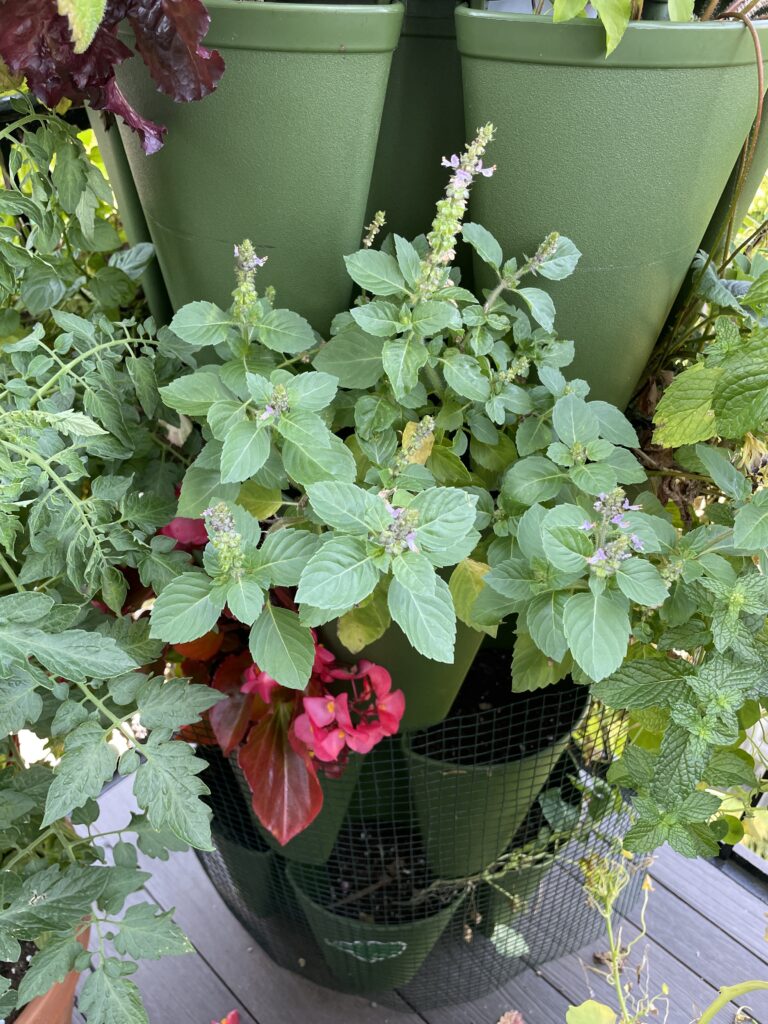
- Tomatoes - Like roses, many people are surprised that I am so successful with tomatoes in containers, but I am! The trick is to plant them in the largest pot you can find. I recommend using either terracotta pots or grow bags. (Note that many people advise against growing tomatoes in terracotta pots since they retain heat and might dry out the soil, but this is not the case for me especially since summers can be cooler and wetter where I live, so your results will probably vary based on where you live). The pots should be at least 16 inches in diameter, up to 20 inches in diameter, and the grow pots should be at least 5 gallons or larger. I use a nice mix of potting soil, compost and perlite (for aeration). I use plants that I started from seed indoors about 6 weeks prior to transplanting. I fertilize them once a month (according to tomato fertilizer package instructions) during the growing season, and keep them well-watered. As with many other types of container plants, I find varieties matter, though unlike some people, I don’t restrict myself to certain types of tomatoes that are earmarked for containers only. Every year I grow some tried-and-tested varieties in containers, as well as 1-2 experimental tomato plants in the container to see how well they do, and then pick and choose which varieties I like the best and do the best year over year. I find cherry tomatoes typically do the best in containers, but some larger varieties can be successful, too. Some of my favorite container tomatoes where I live are:
- Napa chardonnay - this is my favorite-tasting cherry tomato and it always does well for me in containers. It is usually the earliest to produce and the last to stop producing at the end of the season. It is a watery variety which means it is prone to splitting during the rain, but this is another reason I grow it in containers; I always seem to remember to harvest it more quickly out of containers than I used to when I grew it in the ground in my community garden.
- Sunrise bumblebee: I love the taste of sunrise bumblebee and this is a variety of cherry tomato that also seems to produce all summer long. All of the bumblebee tomatoes have done well for me in containers, but sunrise is the prettiest (in my opinion) and tastes the best!
- Sungold: there are a number of types of sungold type cherry tomatoes (they are pretty commonly available) and they all do super well for me in containers, very hardy and produce heavily in containers.
- Dr. Wyche: this is the only full-sized type of tomato I’ve had success with growing in a container that also tastes really good. It’s a large, heirloom “slicer” type of tomato. I usually get 2-3 tomatoes from a container-grown plant, which is not a huge yield and may not be worth it to some, but as it’s difficult in general to grow large heirloom/slicer types where I live during our short season (regardless of whether it’s in the ground or in containers), so I have been pleasantly surprised at the reliability of this plant.
- Petunias - I start some petunias from seed, but of course these can be easily found as starts from garden centres in the spring, too. They are such reliable plants in containers that I always sprinkle some around my containers for reliable color throughout the season! My favorite variety to grow in a container is the Superbissima Cosmic Cherry type from Baker Creek (I am not affiliated with this company). I start them from seed indoors about 3 months before I transplant them out to containers and they grow quite quickly once transplanted outside. They smell great and their colors are beautiful. I stick them in a wide variety of places, in mixed raised beds with other plants, in hanging baskets on my balcony, as well as in the Greenstalk.
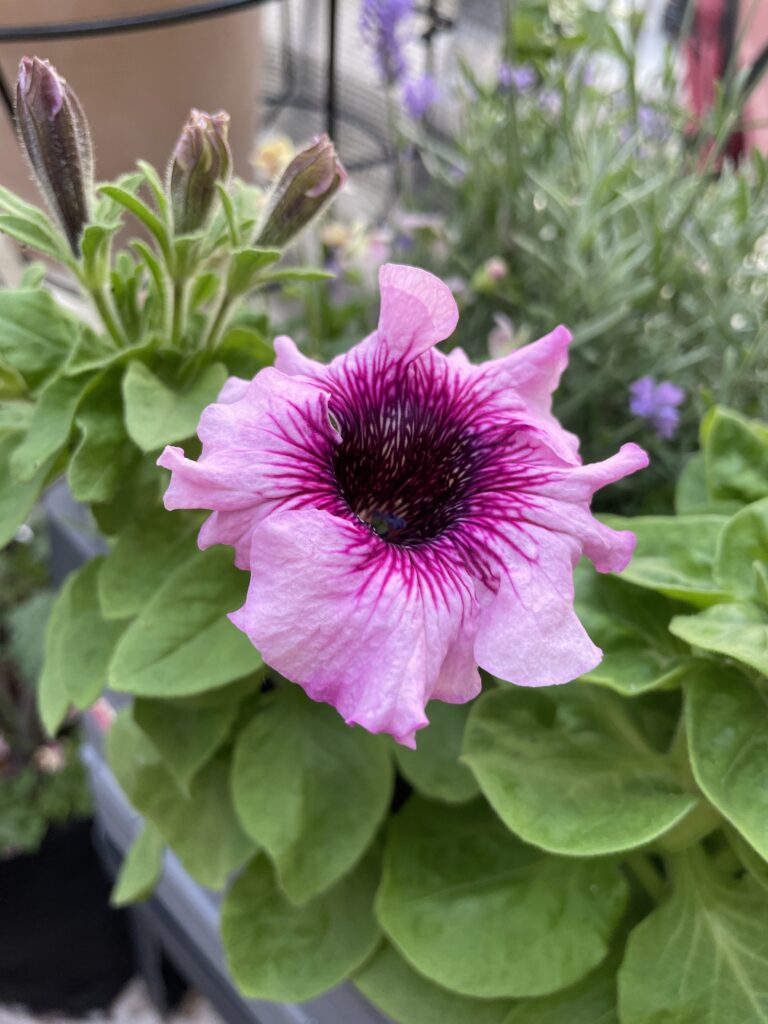
- Pansies and violas - Pansies and violas are super reliable in containers, and again add that splash of color throughout the season. Pansies are better in the cool weather and I find tend to die back once the summer gets hot. Violas, on the other hand, tend to withstand higher temperatures and humidity better, and though they might slow down in the heat of the summer, will begin to thrive and bloom again as the cooler air comes in closer to the end of the summer. They do well in many different types of containers and conditions. I usually plant them in my Greenstalk and in raised beds mixed with other plants.
- Nasturtiums - Where I live, nasturtiums grow like weeds. I always have success growing them in containers. The trick is to choose a variety that will do what you want them to do: some nasturtiums spread and climb, and can quickly take over a small space! Although, these can be fun to climb up a fence for privacy. Most seed packets will say whether the nasturtium is a climbing type or not. My favorite varieties of nasturtiums in containers are the “tip top” varieties along with cherry rose, though I’ve had success with almost all varieties I’ve ever tried. I plant them in the Greenstalk or in any sort of leftover plastic containers I have on hand.
- Cucumbers - I usually experiment with growing cucumbers in containers just for fun, though I have mixed success. My mom actually has much better success growing cucumbers in containers than I do, where her summers are cooler and wetter. I have grown cucumbers from seed (I find they don’t love to be transplanted) and I find that the conditions of that year really dictate how well they do. I plant them in the same types of containers and soil conditions as my tomatoes, and keep them very well-watered.
- Butternut squash - This is the wild card on my list but, yes, I have, unbelievably, had success growing squash in containers! I grow these in the largest grow bag I have on hand, using a rich mix of potting soil, compost and fertilize them throughout the summer. I also keep them well-watered, and put nets around them to protect them from squirrels, which seem to love to eat them long before they are ripe. I put them in the hottest and sunniest location and they sometimes grow all over my balcony! I usually get at least 2-3 squash per season, and would get more but critters usually find a way to eat them by the end of the summer (which is why I keep a net around them).
Bonus: growing tropical plants and houseplants outside
I often move my houseplants and tropical plants (in their containers) outdoors (to a shady, warm spot - they’ll get sunburned if you put them directly in the sun) in the hottest weeks of the summer. Many philodendrons, monsteras, cacti and succulents, Hoyas and more love the boost of energy that being outdoors in a hot, humid summer will provide. I also have experimented with growing some tropical plants like Arabian jasmine, miniature pomegranates (I get beautiful flowers but no fruit), scented geraniums, patchouli, and passionflower vines, and they all do well and are pretty and rewarding during the summer. I’ve tried to overwinter them all with mixed success indoors in the winter under grow lights, but unfortunately many of them cannot handle the transition indoors after their luxurious life outside all summer and I’ve had a lot of them succumb to pest pressure like mealybugs indoors. So, I grow some of these plants every year for fun and to add variety, texture and scent to the container garden, and mentally think of them as annuals.
